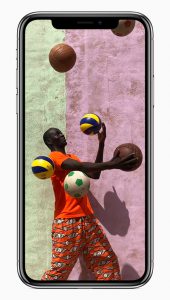Half of TV and VoD viewing will be mobile by 2020
Supported by eight years of extensive media insights, Ericsson ConsumerLab has predicted that the growth of on-demand viewing will continue to soar through to 2020, making up almost half of total viewing.
Altogether, 50% of all TV and video viewing will take place on a mobile screen (tablets, smartphones and laptops), an increase of 85% since 2010. The smartphone alone will account for almost one quarter (an increase of nearly 160% since 2010), according to the eighth edition of Ericsson’s annual ConsumerLab TV and Media report, which details the massive growth in TV and video viewing and the ongoing shift in the way consumers watch content.
Additionally, virtual reality (VR) will be on the road to becoming mainstream, with one in three consumers becoming VR users by 2020. Consumers also value high quality viewing experiences as well as immersive experiences. Close to a quarter of the surveyed consumers say they already have access to a 4K UHD TV screen and another third plan to get one.

Anders Erlandsson, senior advisor, Ericsson ConsumerLab, said: “We can see that consumers are not only watching more video but also changing how and when they do so. This is also shown through the continued growth of mobile viewing, which has been a booming trend since 2010.
“This year also marks the first time that we have explored the level of consumer interest in VR in conjunction with media consumption, and the findings have been fascinating,” continued Erlandsson. “VR has the potential to bring together people from all over the world and create deeper, more personalised, and more complementary media experiences. As consumer expectations for on-demand, mobile and immersive viewing continues to increase, the TV and media industry must focus on delivering highly personalised services in the very best possible quality available.”
TV and video viewing is on the rise; but how, when and where we watch content is changing. Time spent watching TV and video content has reached an all-time high of 30 hours a week, including active viewing of scheduled linear TV, live and on-demand internet services, downloaded and recorded content, as well as DVD and Blu-ray. However, close to 60% of viewers now prefer on-demand viewing over scheduled linear TV viewing, an increase of around 50% since 2010. The average number of used on-demand services has increased from 1.6 in 2012 to 3.8 services in 2017 per person; two in five consumers already pay for on-demand TV and video services today and nearly a third (32%) say they will increase their on-demand spending in the next six to12 months. Portability is also becoming increasingly important factor, with more than a third of consumers wanting access to content when abroad.
Smartphone viewing also continues to gain ground; approximately 70% of consumers now watch videos on a smartphone, double the amount from 2012, making up a fifth of total TV and video viewing. Also, 16 to 19 year olds watch the most content each week (33 hours), an increase of almost 10 hours a week since 2010. However, more than half of this demographic spend their time watching content on-demand, with more than 60% of their TV and video viewing hours spent on a mobile device screen.
The findings also show that while consumers have more access to TV and video services than ever before, the average time spent on searching for content has increased to almost one hour per day, an increase of 13% since last year. In fact, one in eight consumers believe that they will get lost in the vast amount of available content in the future. With the user experience becoming ever more fragmented, six in 10 consumers now rank content discovery as “very important” when subscribing to a new service, while 70% want ‘universal search for all TV and video’.
The social and immersive quality of VR technology is helping to add a new and valuable dimension to the viewing experience. With a third of consumers projected to be VR users by 2020, the technology is expected to play an essential role in the future of TV and video. However, if consumer interest in VR is to increase, several things will need to change. Close to 55% of consumers planning to get VR devices would prefer it if the headsets were cheaper, and almost half think there should be more immersive content available. A third would be more interested in VR if they could get a VR bundle from their TV and video provider.
Quantitative data was collected from 13 countries. Approximately 20,000 online interviews were held with people aged 16 to 69 in Brazil, Canada, China, Germany, India, Italy, Russia, South Korea, Spain, Sweden, Taiwan, the UK and the US. All respondents have a broadband internet connection at home and watch TV or video at least once a week, and almost all use the internet on a daily basis. This study is representative of more than 1 billion people.

